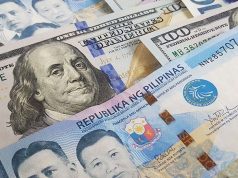BoP gap biggest in nearly a year as more dollars flow out
THE PHILIPPINES saw more dollar outflows in May, causing the biggest balance of payments (BoP) deficit in nearly a year, the central bank reported yesterday.
The country’s external payments position settled at a $583-million deficit last month, double April’s $270-million shortfall and surging from the $59-million deficit in May 2017. May’s gap was the widest since the $678-million deficit posted in July 2017, according to the Bangko Sentral ng Pilipinas (BSP).
The BoP measures the country’s transactions with the rest of the world at a given time. A deficit means more funds fled the economy than what went in, while a surplus shows that more money entered the Philippines.
May marked the fifth straight month of deficit. In a statement, the central bank said its interventions to temper exchange rate volatility fueled outflows, coupled with payments for maturing foreign debt.
“These were partially offset, however, by net foreign currency deposits of the national government and income from the BSP’s investments abroad during the month,” the statement read.
The BSP uses its dollar reserves to temper sharp swings in the peso-dollar rate as part of its “tactical intervention” to keep the currency competitive. The local unit weakened to P52.70 per dollar in May to mark a fresh low in nearly 12 years.
May’s balance brought the five-month BoP to a $2.08-billion deficit, ballooning from the $136-million gap posted in the same period last year.
The central bank expects a $1.5-billion BoP deficit this year, wider than the $863-million actual deficit logged as of end-2017.
Still, the projected level is seen “manageable” equivalent to 0.4% of gross domestic product.
Gross international reserves, which reached $79.2 billion as of May — equivalent to 7.6 months of import duties — tempered the deficit.
The wider trade gap is expected due to importation of more capital equipment and other materials needed to support business expansion and the government’s infrastructure development drive.
Analysts have said reversal of the country’s current account to deficit has been the main reason for the persistent weakness of the peso, which has lately been trading at fresh 12-year lows at the P53-to-the-dollar level. — Melissa Luz T. Lopez



